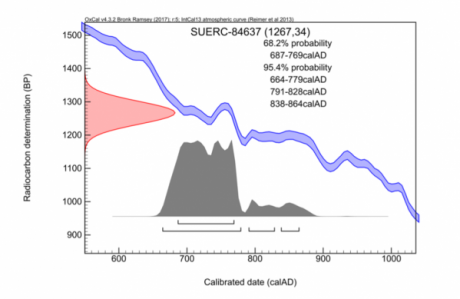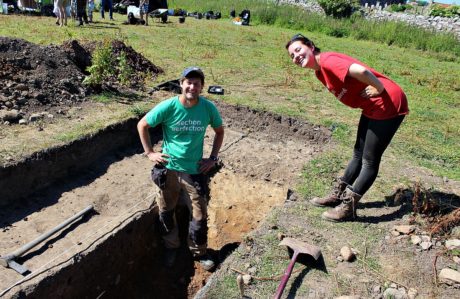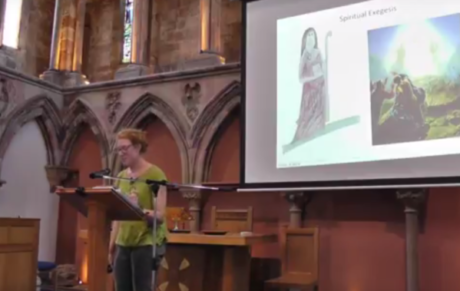 We’re finally ready to reveal where we’re putting our trenches, and why.
We’re finally ready to reveal where we’re putting our trenches, and why.
We’re on a mission to unearth evidence of a long lost monastery that was established by Princess Aebbe around AD 640. We’ve narrowed our search area down to a field in the centre of Coldingham, right next to the later medieval priory, but we can’t dig the entire site! So where exactly within that field should we dig?
Armed with a map produced from a recent geophysical survey, we did something few archaeologists would dare to do: we asked our followers to help us decide – should we dig option A, B, C, D, E or F?

The original survey contained this map, and brief descriptions of what we think might be at each trench option.
The results
Exactly 743 people responded to our call for help. Regardless of their level of archaeological expertise, or where they were in the world, we gave everyone the same information; the aim of our research, the map above, a brief description of what we think might be at each of the options A-F, and the ability to make three choices.
The top choices from our followers were trenches F (85%), E (62%), and C (54%) and guess what? That’s exactly where we’ll be concentrating our efforts.

The results show us the cold hard truth of where you want us to dig
By choosing F, our followers have asked to investigate an area that includes a large, rectangular enclosure which looks very much like the remains of a buried building. It also contains a large pit, and several other walls and ditches too. Digging here could confirm the presence of a building, what is was for, and whether it’s part of Aebbe’s monastery – which is exactly what our followers seem to want!
By choosing E, our followers have asked us to try and find out what kind of small-scale industrial activity might have taken place on the site. From the geophysical survey, and from a small test pit that we dug, it looks like people were making or processing something here. It might have been something like a tannery, so digging here could help us find out exactly what it was, and whether it took place in the 7th century.
And by choosing C, our followers have also indicated that building up a wider chronology of the site is a top priority. This area has LOTS of ditches, and part of a possible trackway, each probably from a different era. Digging here means that there’s lots to unpick, but we should be able to figure out which ones came first, which ones came last, whether any of them are part of Aebbe’s monastery, and what this tells us about the use of the site over a longer period of time.
Finally, we also asked our followers why (in their own words) they made their choices. After analysing the responses, 31% were to do with establishing a comprehensive chronology of the site by digging as many features as possible, while 24% simply wanted to target the features that most matched our aim of finding Aebbe’s monastery. Impressively, ‘finding as many artefacts as possible’ was mentioned much less often than ‘understanding the site’s chronology’, demonstrating some quality archaeological thinking from our followers!
Our final decision

The final trench location plan… the survey results made us rethink the size, shape and location of the trenches we’ll be digging.
The choices made by our followers have shaped our plans enormously, but we couldn’t quite bring ourselves to let go of our own preference for digging options A and B (a large, curving ditch and more of the possible trackway).
In the end, we’ve decided to combine our followers’ interest in the more complex, but as-yet undated features, with our own experience that tells us the ditch (which we believe contains some 7th and 8th century artefacts) and trackway are well worth excavating too.
But it wasn’t just a matter of digging more holes. There’s only so much we can excavate in two weeks, so to fit everything in, we have had to make a sacrifice: we are still going to open trenches over the three most popular options, but we’re going to make them just a little bit smaller. This will allow us to maintain the same overall area of excavation, while also being able to satisfy our own curiosity about options A and B.
In short, we’ve changed the size, shape and number of our trenches in response to what our followers told us. As a result, we’re going to investigate the things that, based on the geophysical survey, look like buildings, some possible small-scale industrial activity, a possible trackway, and many, many, MANY ditches.
For now, the question is… will our plan work? Will the choices our followers made pay off? And will any of these features turn out to be part of Aebbe’s long lost monastery? We can’t wait to find out…


